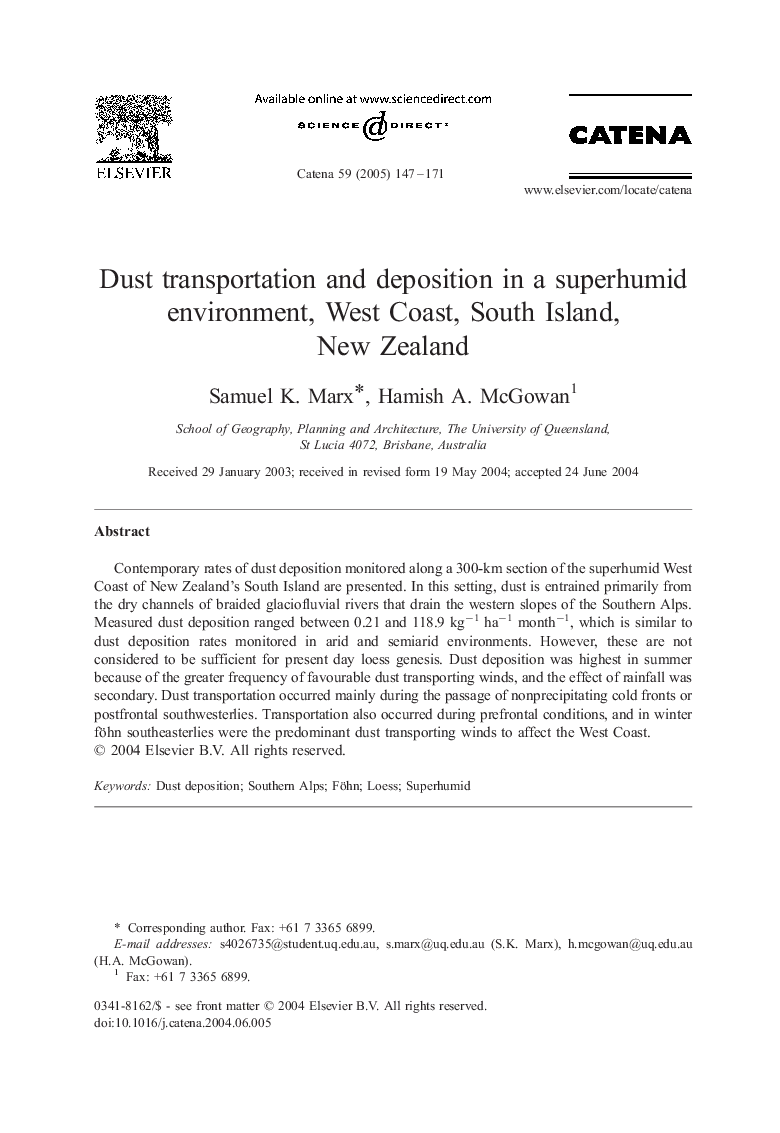| Article ID | Journal | Published Year | Pages | File Type |
|---|---|---|---|---|
| 9489972 | CATENA | 2005 | 25 Pages |
Abstract
Contemporary rates of dust deposition monitored along a 300-km section of the superhumid West Coast of New Zealand's South Island are presented. In this setting, dust is entrained primarily from the dry channels of braided glaciofluvial rivers that drain the western slopes of the Southern Alps. Measured dust deposition ranged between 0.21 and 118.9 kgâ1 haâ1 monthâ1, which is similar to dust deposition rates monitored in arid and semiarid environments. However, these are not considered to be sufficient for present day loess genesis. Dust deposition was highest in summer because of the greater frequency of favourable dust transporting winds, and the effect of rainfall was secondary. Dust transportation occurred mainly during the passage of nonprecipitating cold fronts or postfrontal southwesterlies. Transportation also occurred during prefrontal conditions, and in winter föhn southeasterlies were the predominant dust transporting winds to affect the West Coast.
Keywords
Related Topics
Physical Sciences and Engineering
Earth and Planetary Sciences
Earth-Surface Processes
Authors
Samuel K. Marx, Hamish A. McGowan,
